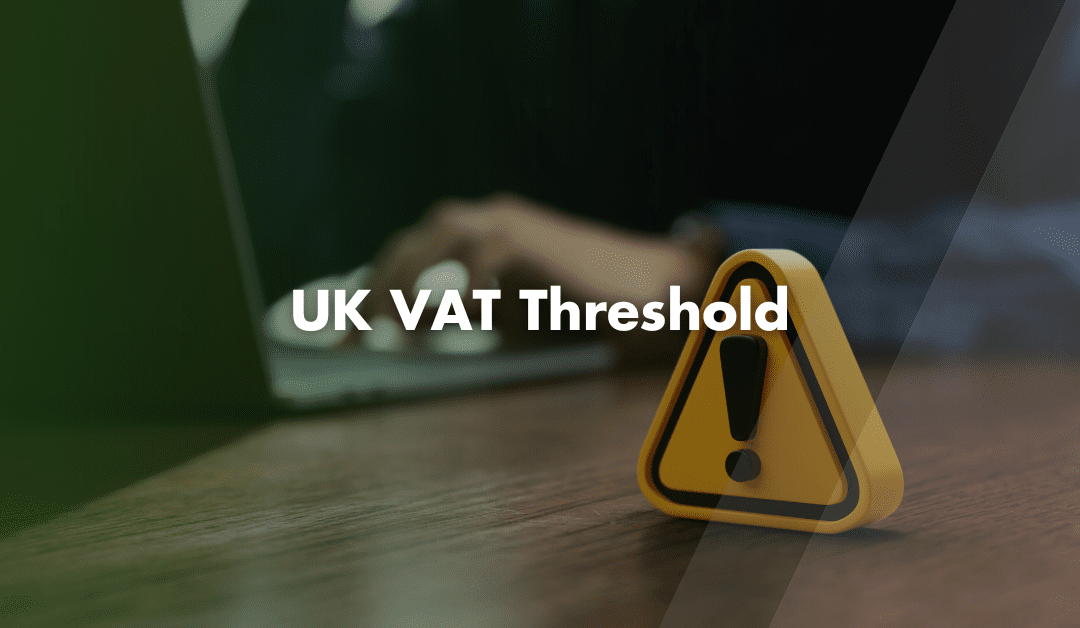What is the VAT Threshold?
The VAT Threshold is the point at which your business must register for Value Added Tax (VAT) with HMRC. HMRC currently sets this threshold at £85,000 in annual turnover. If your business’ taxable turnover exceeds £85,000 in any 12-month period, you must register for VAT.
Your turnover is the total value of your sales, not your profit. This figure includes everything you sell that isn’t exempt from VAT.
Importance of the Threshold
The VAT Threshold exists to reduce the administrative burden on smaller businesses. By setting a limit, the government ensures that only businesses with a larger turnover need to navigate VAT registration and compliance. This allows smaller businesses to focus on growing without the extra paperwork.
For businesses, hitting the threshold brings additional responsibilities, including:
- Charging VAT on your products or services.
- Paying VAT on the goods or services you purchase.
- Submitting an annual VAT return to HMRC.
- Maintaining accurate VAT records.
Crossing the VAT Threshold
Once your business’ turnover crosses the VAT threshold, you must register for VAT within 30 days. Failing to register on time can result in penalties from HMRC. After registration, you will need to start charging VAT on applicable products and services. Additionally, you must submit VAT returns regularly and maintain VAT records.
If you expect your turnover to cross the threshold in the next 30 days, even if you haven’t yet, you must register in advance. Keep a close eye on your turnover, as you can cross the threshold at any point during the year, not just at the end of the tax year.
Registering Voluntarily
Even if your turnover is below the VAT threshold, you may choose to register for VAT voluntarily. Many businesses do this because it allows them to reclaim VAT on their purchases. This can be particularly beneficial if most of your customers re VAT-registered businesses themselves, as they can reclaim VAT on what they buy from you.
Voluntary registration can also be advantageous if you expect to exceed the threshold in the near future or if you have high start-up costs and want to reclaim VAT on these expenses.
Different VAT Rates
Once you register for VAT, you must understand the various VAT rates. In the UK, there are 3 primary VAT rates:
- Standard Rate (20%): This is the default rate and applies to most goods and services.
- Reduced Rate (5%): This rate applies to items like domestic fuel and energy-saving materials.
- Zero Rate (0%): This covers essential items such as children’s clothing and most food products.
Some goods and services, such as healthcare and funeral services, are VAT-exempt, meaning you do not charge any VAT on them.
Temporarily Exceeding the Threshold
It is possible to cross the VAT Threshold temporarily due to a one-off large order or event. In such cases, you can apply for a “VAT Registrations Exception” from HMRC. You will need to provide evidence that you are unlikely to exceed the threshold again in the near future.
HMRC’s approval for an exception is a one-time decision. If your turnover exceeds the threshold again, you must to register for VAT.
Calculating VAT Taxable Turnover
To calculate your VAT taxable turnover; add up all the sales you’ve made in the last 12 months, excluding VAT, across all your products and services. If the total exceeds £85,000, you must register for VAT.
For example: If you’ve sold £60,000 worth of goods and £30,000 worth of services in the past year, your total turnover is £90,000. This means you’ll need to register for VAT after April 2024.
Contact Us
We are not just accountants; we are Chartered Accountants with one of the most reputable and premium accounting bodies. We are registered and regulated by ACCA; so you can rest assured that you are in good hands. Knowing this, don’t hesitate to get in touch with us if you require assistance: Pi Accountancy | Contact Us

